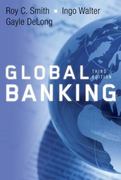Answered step by step
Verified Expert Solution
Question
1 Approved Answer
Normal probability distribution Assuming that the rates of return associated with a given asset investment are normally distributed, that the expected retum, i, is 18.5%,

Normal probability distribution Assuming that the rates of return associated with a given asset investment are normally distributed, that the expected retum, i, is 18.5%, and that the coefficient of variation, CV, is 0.48, answer the following questions a. Find the standard deviation of returns, o b. Calculate the range of expected return outcomes associated with the following probabilities of occurrence: (1) 68%, (2) 95%, (3) 99% a. The standard deviation of returns, or, is (% (Round to three decimal places.) b. (1) The lowest possible expected return associated with the 68% probability of occurrence is %. (Round to two decimal places) The highest possible expected return associated with the 68% probability of occurrence is % (Round to two decimal places.) (2) The lowest possible expected return associated with the 95% probability of occurrence is % (Round to two decimal places.) The highest possible expected return associated with the 95% probability of occurrence is %. (Round to two decimal places.) (3) The lowest possible expected return associated with the 99% probability of occurrence is 1% (Round to two decimal places) The highest possible expected return associated with the 99% probability of occurrence is % (Round to two decimal places.) Normal probability distribution Assuming that the rates of return associated with a given asset investment are normally distributed, that the expected retum, i, is 18.5%, and that the coefficient of variation, CV, is 0.48, answer the following questions a. Find the standard deviation of returns, o b. Calculate the range of expected return outcomes associated with the following probabilities of occurrence: (1) 68%, (2) 95%, (3) 99% a. The standard deviation of returns, or, is (% (Round to three decimal places.) b. (1) The lowest possible expected return associated with the 68% probability of occurrence is %. (Round to two decimal places) The highest possible expected return associated with the 68% probability of occurrence is % (Round to two decimal places.) (2) The lowest possible expected return associated with the 95% probability of occurrence is % (Round to two decimal places.) The highest possible expected return associated with the 95% probability of occurrence is %. (Round to two decimal places.) (3) The lowest possible expected return associated with the 99% probability of occurrence is 1% (Round to two decimal places) The highest possible expected return associated with the 99% probability of occurrence is % (Round to two decimal places.)
Step by Step Solution
There are 3 Steps involved in it
Step: 1

Get Instant Access to Expert-Tailored Solutions
See step-by-step solutions with expert insights and AI powered tools for academic success
Step: 2

Step: 3

Ace Your Homework with AI
Get the answers you need in no time with our AI-driven, step-by-step assistance
Get Started


